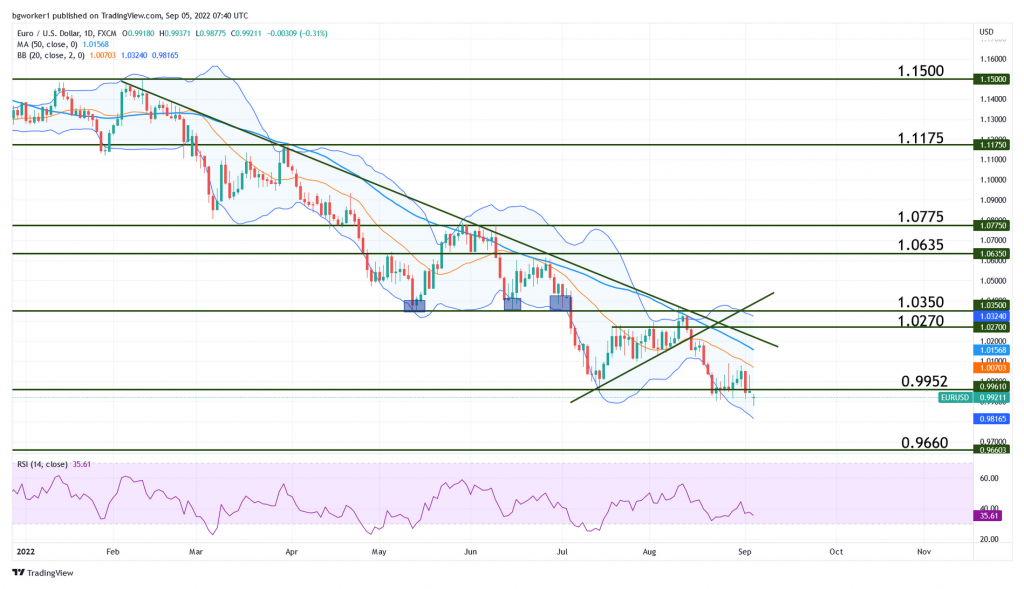Dollar Gets a Boost From NFP, DXY Prints a 20-Year High
Gas Shortage Sends Euro to 20-Year Low
For the first time in nearly two decades, the Euro dropped below 0.9900 against the US Dollar, reaching a low at $0.9877 on Monday morning. The greenback benefited late last week from a better than anticipated Non-Farm Payrolls report (forecast 295K; actual 315K) but was mostly up and down as the Average Hourly Earnings and Unemployment Rate came out worse than expected.
Russia failed to meet a Saturday deadline to reopen the Nord Stream pipeline and this seems to be the main reason for the new low in EUR/USD. The cited reason for the failure to reopen the flows is an oil leak in a turbine.
The US Dollar Index (DXY), which tracks the performance of the US Dollar against 6 major currencies, climbed to a high at 110.27. It’s the highest point for the index since mid-2002.
Key Events for the Week Ahead
U.S. banks are closed today, celebrating Labor Day and no data is scheduled for release. Tuesday at 2:00 pm GMT, the greenback will be affected by the Services PMI, which is a survey of purchasing managers from the services sector that acts as a leading indicator of economic health. The expected reading is 55.0, a drop from the previous 56.7.
The main event of the week comes Thursday as the ECB is expected to raise the interest rate from the current 0.50% to 1.25%. This is a big hike, which could boost the Euro but the ECB press conference takes place the same day and will also play an important role. The rate will be announced at 12:15 pm GMT and the press conference starts at 12:45 pm GMT.
Thursday at 1:10 pm GMT, Fed Chair Powell will speak at the Cato Institute’s Annual Monetary Conference. Audience questions are expected and this is likely to boost volatility.
Friday the EU Economic Summit takes place and two FOMC members will speak at different events, both at 4:00 pm GMT. It’s unclear how this will affect the EUR and USD but caution is advised.
Technical Outlook – EUR/USD
Monday’s session started with a price gap and usually, gaps tend to be closed. What this means is that more often than not, price travels back to where the gap originated, and then the gap is considered closed. Of course, this is not a sure thing but the probability favors such a move.
The RSI is showing bullish divergence when comparing the July low with the current one. This supports the view that the pair is likely to climb and close the gap. The previous support (0.9952) will possibly act as resistance, followed by the 50-day Moving Average (blue line).